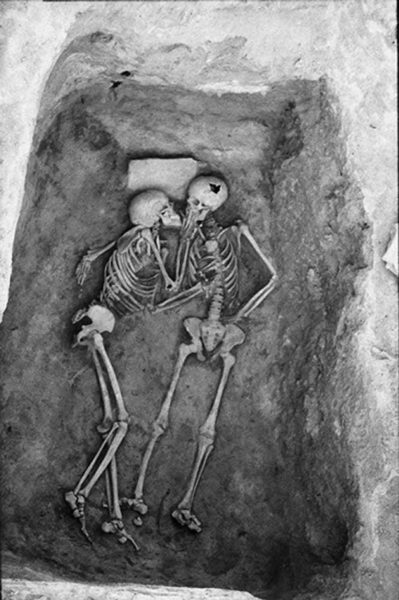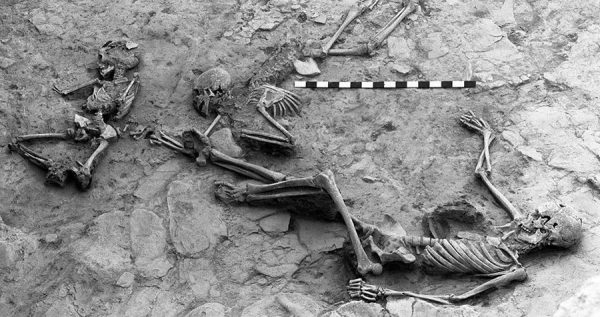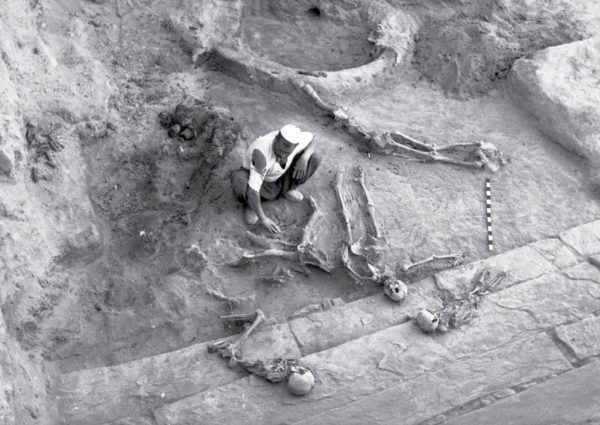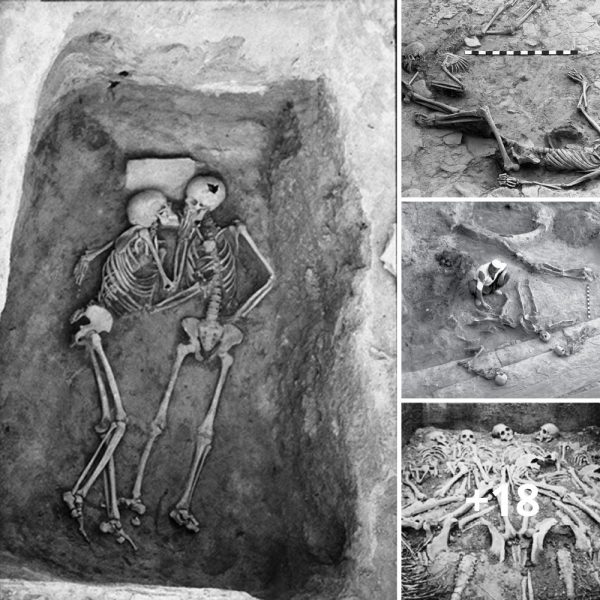The Hasanlu Lovers, an archaeological marvel, embody a poignant tale of love that transcends time. Unearthed in 1973 at the Teppe Hasanlu site in the Solduz Valley, West Azerbaijan Province, Iran, these human remains, dating back 2,800 years, have captured the world’s fascination.

The Hasanlu settlement, circa 800 BCE, faced destruction at the hands of an unknown invading force. The site witnessed a devastating attack, leading to the demise of its inhabitants, who were left where they fell. Subsequently, much of the site succumbed to a destructive conflagration.
The “lovers,” two skeletons discovered in a mudbrick and plaster bin during 1973 excavations, reflect the tragic events that unfolded during the site’s destruction.
Positioned in an embrace, facing each other, the skeletons tell a story of tenderness amid turmoil. The left skeleton reaches out to touch the face of the other, their arms intertwined, immortalizing a moment of connection in the face of catastrophe.

Both skeletons exhibit signs of trauma from around the time of their death, suggesting they perished during the site’s destruction. While injuries are present, none are definitively fatal, leaving room for speculation about the circumstances of their demise.
These skeletons, labeled “The Lovers,” were displayed at the Penn Museum from the mid-1970s until the mid-1980s. The profound mystery surrounding them raises intriguing questions. Why were they found together in a bin?
Was it an intentional placement, or did they seek refuge from their attackers? Unlike other skeletons at the site adorned with artifacts, “The Lovers” had nothing with them except for a stone slab under their heads, adding to the enigma.

The absence of personal possessions sparks curiosity—were they stripped of their belongings, or did they have a different status within the community? The nature of the relationship between these two individuals remains unclear.
The tender pose could be a spontaneous gesture of comfort during dire circumstances, showcasing the human instinct for connection even in the face of adversity.
As Hasanlu faced its darkest hour, the embrace of these two individuals, whether friends, lovers, relatives, or even strangers, may have been a natural response to extreme distress.

The Hasanlu Lovers, a testament to enduring love amid chaos, continue to captivate minds and hearts, reminding us that even in the shadow of destruction, the human spirit seeks connection and solace.





